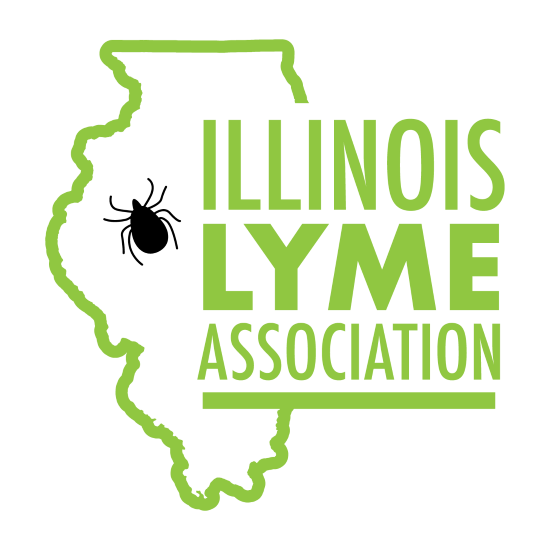Understanding and Easing Herxheimer Reactions During Lyme Treatment
By Jenny Lelwica Buttaccio
If you’ve had Lyme disease for a while, you’ve probably heard some challenging stories about the dreaded “Herxheimer reaction.” For some Lyme patients, the thought of having to endure an uncomfortable reaction on top of already debilitating Lyme symptoms is too much to bear. Some people may even choose to delay treatment altogether to avoid these unpleasant symptoms.
But what exactly is a Herheimer reaction? And more importantly, what can be done to ease them and find some relief?
What Is a Herxheimer Reaction?
In the 1800s, Jarisch-Herxheimer reactions were first described by Adolf Jarisch in medical literature after he noticed a worsening of skin lesions in a patient who had begun treatment for syphilis. In the 1900s, Karl Herxheimer noted a similar reaction. Eventually, this phenomenon became known as the “Jarisch-Herxheimer reaction.” Over the years, patient communities have adopted a shortened version of the full name, calling them “Herxheimer reactions,” which I’ll use moving forward, or “herxes.”
The reaction tends to happen in people with spirochetal infections, such as Lyme disease, relapsing fever, and others, when they’re treated with antibiotics, according to a medical review in StatPearls. It may also occur in people with certain fungal or protozoal infections and in people using other antimicrobial therapies such as herbs.
Common symptoms of Herxheimer reactions include:
fever
chills
feeling cold or shivering
nausea and vomiting
headache
rapid heart rate
low blood pressure
hyperventilating,
muscle pain
skin rashes
flushing
Currently, doctors don’t fully understand how a Herxheimer reaction works and believe it may have several causes. One potential cause is when antibiotics or antimicrobials kill spirochetes, they break apart and release inflammatory substances such as cytokines into the bloodstream, triggering a strong immune response.
While some cytokine activity bolsters the immune system to fight infections, too many of these chemicals can have adverse effects and flare symptoms.
But the good news is that Herxheimer reactions are typically temporary, and using some basic detoxification practices and supportive therapies is enough to get most people over the hump and back on more solid ground.
Support for Herxheimer Reactions
1. Infared sauna treatments: An infrared sauna is different from the steam saunas you might be familiar with at your local gym or spa. The temperature range for an infrared sauna is typically between 110 degrees to 130 degrees (depending on the machine), which is significantly less than a steam sauna. Infrared saunas heat the body from the inside out, allowing the heat to penetrate more deeply.
According to experts, a sauna session (even one as short as 10 minutes) can improve circulation, reduce pain, aid in muscle recovery, and more. Before investing in an infrared sauna, talk with your healthcare provider. There may be some instances where sauna sessions are contraindicated.
2. Activated charcoal: Activated charcoal capsules or powder may offer a low-cost option to help you when you’re feeling cruddy. Activated charcoal is a binding agent and helps your body get rid of certain toxic substances. Some people also find that it pairs well with infrared sauna use.
Note: You need to take activated charcoal at least two hours before or after your other medications and supplements to prevent the charcoal from absorbing them.
3. Epsom salts baths: Epsom salts may have a relaxing effect on muscles and the nervous system, and it’s an inexpensive way to ease Herxheimer reactions. Although there are no studies to show that magnesium sulfate, the chemical component in Epsom salts, is actually absorbed through the skin, many people in the Lyme disease community report experiencing benefits from Epsom salts.
However, taking baths might not be tolerable for some people. In that case, you may want to begin with a simple foot bath to gauge how you feel when using this method.
4. Glutathione: Glutathione is considered the body’s master antioxidant, and it helps to support the liver through the detoxification process. Glutathione is available in multiple forms, including reduced, liposomal, and an intravenous injection. Although this supplement can be a bit pricey, many people find that it helps mitigate the effects of a Herxheimer reaction by improving energy, decreasing inflammation, reducing brain fog, and more.
5. Exercise as tolerated: While exercise is probably the last activity you feel like doing when you're experiencing a herx, it can be one of the best ways to reduce your symptoms when done appropriately. Your lymphatic system–a network of tissues, organs, and fluid that eliminates waste and disperses immune cells throughout your body–is stimulated through movement and contractions of your muscles.
Even gentle exercise, such as walking, yoga, or pilates, can be enough to improve circulation, get your lymph moving, and help you feel better. Just don’t overdo it. If you feel exhausted after an activity, you’ve done too much, and you need to scale back next time.
Ultimately, Herxheimer reactions can be managed in a variety of ways, so, with some trial and error, you’re likely to find some tools to support you through this challenging aspect of treatment.
Sources:
Ahokas EK, Hanstock HG, Kyröläinen H, Ihalainen JK. Effects of repeated use of post-exercise infrared sauna on neuromuscular performance and muscle hypertrophy. Front Sports Act Living. 2025 Mar 4;7:1462901. doi: 10.3389/fspor.2025.1462901
Dhakal A, Sbar E. Jarisch-Herxheimer Reaction. [Updated 2023 Apr 24]. In: StatPearls [Internet]. Treasure Island (FL): StatPearls Publishing; 2025 Jan. https://www.ncbi.nlm.nih.gov/books/NBK557820/
